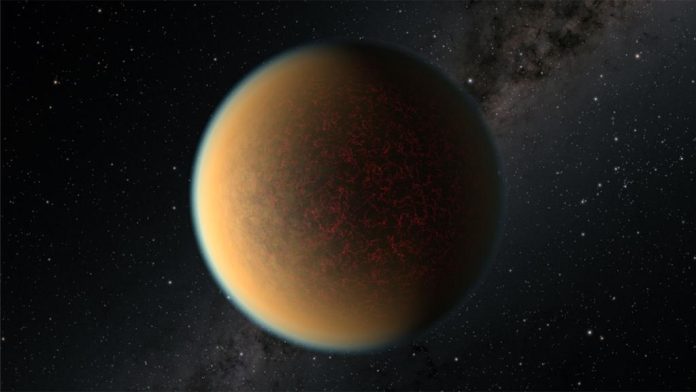
The total number of exoplanets discovered to date totals 5,288. Among them are a host of rocky, Earth-like exoplanets but none of them seem to have atmospheres.
It’s a fairly challenging observation to make but a team of researchers think they’ve come up with a new, simpler technique.
It involves measuring the combined temperature of a star and the exoplanet just before the planet passes behind.
If it’s lower than expected, the planet is likely to have an atmosphere regulating its temperature!
The search for alien worlds has of course in itself an exciting journey.
Finding other planets around distant stars helps us to understand more about possibility of life in the Universe.
Finding other planets that could sustain life is perhaps one of the most exciting goals in modern science. Before we can get to that stage however, we need to first find worlds with atmospheres.
Atmospheres around Earth-like planets are key components for the development of life (I should add life like us since there could be a whole host of different biologies out there!)
The layer of gas surrounding rocky worlds insulates the planet and acts to regulate its temperature to.
Our own atmosphere warms during the day and cools at night but it redistributes the heat of the Sun around the planet keeping it a moderately temperate climate for life.
A new study led by PhD student Qiao Xue from the University of Chicago has developed an intriguing new way to hunt for Earth-like planets with an atmosphere.
Typically we we have relied upon the study of the light from the host star as the planet passes in front to reveal the presence of an atmosphere. It’s an approach which turns out to be far more efficient and simpler than previous methods.
The idea was first proposed in 2019 by Bean and Megan Mansfield to analyse the temperatures of the exoplanet and the star. More accurately the difference between the temperature of the exoplanet when at its hottest and the predicted temperature at its coldest.
An atmosphere around an exoplanet would disperse the heat around the surface, reducing the day time temperature.
The team theorised that if the actual temperature of an exoplanet is not as hot as it could be then an atmosphere must be present and redistributing the warmth. Until now thought, the technology was not sensitive enough. The James Webb Space telescope has changed that though.
As an exoplanet passes in front of the host star, some of the star’s light is blocked and so the overall brightness decreases. As the planet passes almost behind the star then the light from the star and a little from the exoplanet allows for a measure of the brightness of the full system.
As the planet passes behind then we can measure stellar brightness alone and, analysing the changes in light, the brightness and hence temperature of the planet can be deduced.
Using this technique, the team applied their attention to planet known as GJ1132 b 41 light years away. They concluded that it does not have an atmosphere because its measured temperature is too close to the calculated maximum temperature.
It therefore cannot have an atmosphere redistributing the energy from its host star. It is therefore not a suitable candidate for live!
Written by Mark Thompson/Universe Today.



